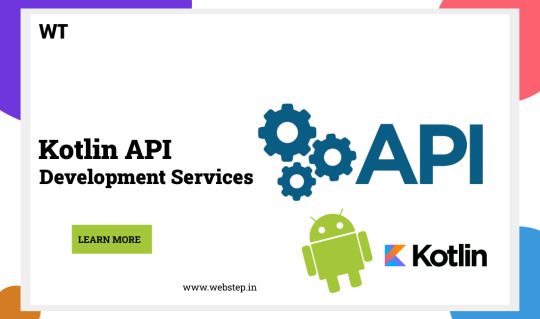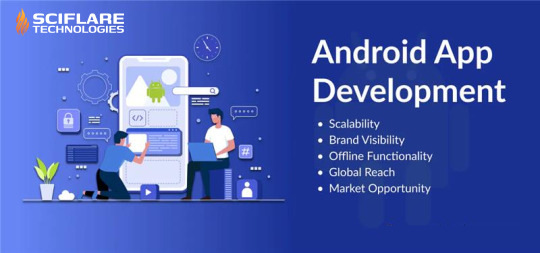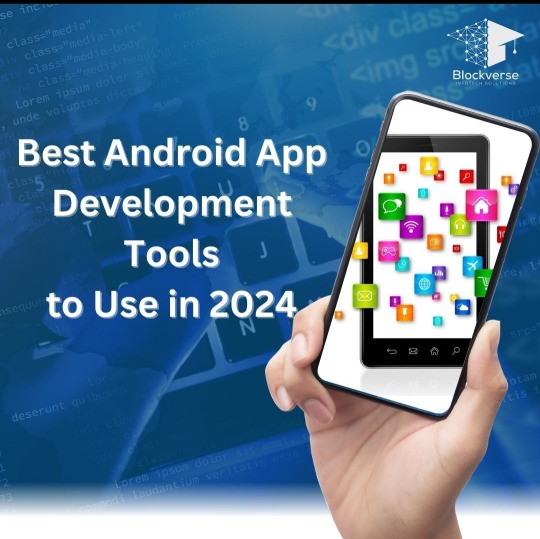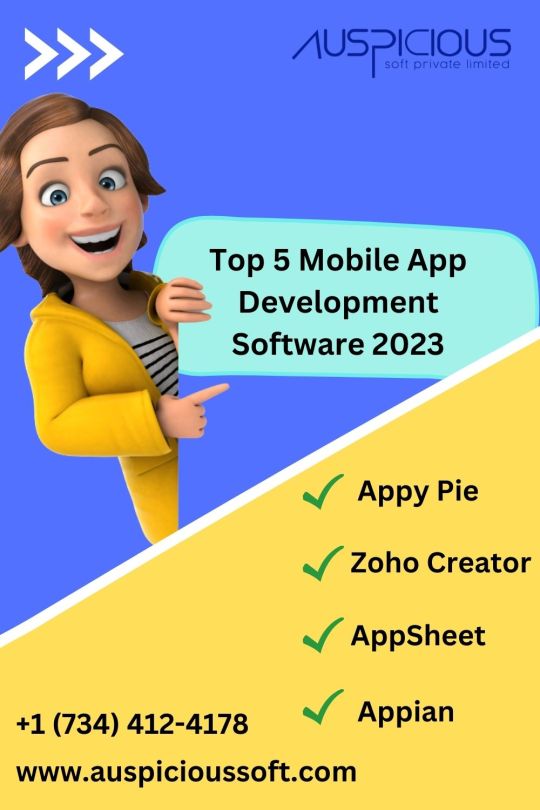#kotlin application
Explore tagged Tumblr posts
Text
Kotlin API development services

In the ever-evolving landscape of software development, Kotlin has emerged as a powerhouse, gaining popularity for its concise syntax, interoperability with Java, and seamless integration capabilities. As businesses seek to build robust and scalable applications, Kotlin API development services have become a focal point for developers. In this article, we'll explore the key aspects of Kotlin API development services and how they are reshaping the future of software architecture.
Why Choose Kotlin for API Development:
Kotlin, a statically typed programming language, brings a host of advantages to API development. Its succinct syntax reduces boilerplate code, making development more efficient and less error-prone. With full interoperability with Java, Kotlin allows developers to leverage existing Java libraries seamlessly, providing a smooth transition for projects migrating from Java to Kotlin.
Expressive and Concise Code:
Kotlin's expressiveness allows developers to write clean and concise code, enhancing readability and maintainability. This is particularly advantageous in API development, where simplicity and clarity are paramount. The reduced verbosity of Kotlin code not only accelerates the development process but also contributes to the overall quality of the API.
Enhanced Safety and Null Safety:
Kotlin is designed with a strong focus on null safety, addressing one of the most common sources of runtime errors. The language's type system helps eliminate the infamous null pointer exceptions, providing developers with a more secure environment for API development. This feature significantly contributes to the reliability and stability of Kotlin-built APIs.
Seamless Integration with Existing Java Codebase:
Kotlin's compatibility with Java extends beyond just syntax. This interoperability ensures a smooth integration process with existing Java codebases. Businesses can adopt Kotlin gradually, introducing it into their projects without the need for a complete overhaul. This flexibility makes Kotlin API development an attractive option for organizations with established Java infrastructure.
Coroutines for Asynchronous Programming:
Asynchronous programming is crucial in API development to handle concurrent tasks efficiently. Kotlin introduces coroutines, a powerful and lightweight concurrency design pattern, simplifying the complexity of asynchronous code. This feature allows developers to write asynchronous operations more naturally, leading to more responsive and scalable APIs.
Thriving Community Support:
Kotlin benefits from a vibrant and supportive community of developers. The community actively contributes to the language's growth, providing libraries, tools, and best practices for Kotlin API development. This support ensures that Kotlin stays aligned with industry standards and continues to evolve to meet the ever-changing demands of modern software development.
Conclusion:
In conclusion, Kotlin API development services offer a compelling solution for businesses seeking to build high-performance, scalable, and maintainable APIs. The language's concise syntax, enhanced safety features, seamless integration with Java, coroutines for asynchronous programming, and strong community support make Kotlin an ideal choice for forward-thinking developers and organizations. As we navigate the future of software architecture, embracing Kotlin API development services opens the door to innovation and sets the stage for a new era in application development.
#kotlin api development#kotlin app development#kotlin application#webstep#webstep technologies kolkata
1 note
·
View note
Text

Essential Tools and Libraries Every Android Developer Should Master
Dive into the top Android tools and libraries that will transform your workflow and accelerate your app-building process.
#hire kotlin developer#android developer#android application development services#tools and libraries#tools and libraries for android developer
0 notes
Text
How App Interface Design Is Evolving with AI and User-Centric UX Trends

App Interface Design's Evolution: AI and User-Centric UX Trends Consider this: The average smartphone user touches their device over 2,600 times a day. For heavy users, that figure soars past 5,400. Each tap, swipe, and pinch interacts directly with an interface designed to guide them. But are those interfaces truly serving users in 2025, amidst accelerating technological user-centric UX trends and the pervasive influence of AI in design? The traditional ways we conceived of and built interfaces are rapidly transforming, driven by sophisticated algorithms and a renewed, imperative focus on authentic user-centric design.
The AI Paradigm Shift in Interface Creation
Artificial intelligence isn't merely a tool add-on; it signifies a profound paradigm shift in how we approach the very foundations of app interface design. Overtly, AI automates routine tasks. Subtly, it augments creativity, analyzes colossal datasets with unprecedented alacrity, and stands poised to recalibrate the designer's role entirely. This isn't science fiction anymore; it's the operating reality for forward-thinking design teams.
AI Assisting Design Workflows
Integrating AI assistance into workflows offers tangible improvements in efficiency and opens avenues for novel design possibilities.
Automation of Repetitive Tasks: Tedious activities such as image slicing, code generation for basic components, or initial layout variations can be handled by AI. This frees designers to concentrate on more complex problem-solving, creative conceptualization, and strategic thinking. Think of AI not as replacement, but as a highly efficient junior assistant handling the groundwork.
Generating Design Variations: Based on established brand guidelines, user data, or even initial wireframes, AI algorithms can generate a myriad of design options in moments. This velocity allows for rapid iteration and comparative analysis, potentially unveiling design directions a human might not have considered within the same timeframe.
Predictive Analytics for User Behavior: AI's capacity to sift through vast quantities of usage data identifies patterns and predicts user actions with increasing accuracy. This predictive power directly informs design decisions, allowing interfaces to pre-empt user needs or present information most relevant to an individual's predicted journey within the application.
Ethical Considerations and Bias Mitigation
As AI becomes more entrenched in the design process, acknowledging and actively mitigating inherent biases is absolutely paramount. AI models are trained on data, and if that data reflects societal biases (racial, gender, ability, etc.), the AI will perpetuate them in its design outputs.
Vigilance is required to audit the data sources used for AI training.
Testing AI-generated designs across diverse user demographics is crucial to identify and rectify unfair or exclusionary outcomes.
Maintaining human oversight in crucial decision points of the design process safeguards against automated discrimination or ethically questionable design patterns. Designers become stewards, ensuring the AI serves human well-being and inclusivity.
The Core of User-Centricity in 2025
While technology sprints ahead, the raison d'être of design remains constant: serving the user. User-centric UX trends are less about adopting flashy tech and more about a deeply empathetic approach that prioritizes genuine human needs, contexts, and emotions. In 2025, "user-centric" holds a more nuanced, sophisticated meaning than ever before.
Understanding Evolving User Needs
User expectations aren't static; they morph with technological fluency and societal shifts. A truly user-centric design understands this fluidity.
Hyper-Personalization: Beyond simply using a user's name, personalization now demands interfaces that adapt content, features, and even visual style based on real-time context, historical usage, preferences, and predicted needs. This requires a granular understanding of individual users, facilitated by AI analysis.
Accessibility as a Universal Standard: Designing for accessibility is no longer an afterthought or an optional feature; it is a fundamental requirement. This encompasses not only compliance with guidelines (like WCAG) but designing intuitively for users with diverse cognitive, visual, auditory, and motor abilities from the outset. Inaccessible design effectively excludes large potential user bases.
Emotional Design (Kansei UX): Moving beyond usability, designers now consider the emotional resonance of an interface. Does it feel joyful, trustworthy, calming, exciting? Kansei engineering, originating in Japan, studies how users feel about products. Applying these principles to app interface design fosters deeper user engagement and loyalty by consciously eliciting positive emotional responses.
Measuring and Iterating on User Experience
Good design isn't guesswork; it's an iterative process informed by data and direct user feedback. Measuring the efficacy of designs is foundational to refinement.
Employing robust analytics to track user flows, completion rates, points of friction, and feature engagement.
Conducting diverse forms of user research: usability testing, interviews, surveys, and contextual inquiries.
Utilizing A/B testing and multivariate testing to compare design variations head-to-head based on quantifiable user behavior metrics.
Establishing continuous feedback loops, allowing designers to remain responsive to evolving user sentiments and needs over the product lifecycle.
Synergizing AI and User-Centric Approaches
The true power emerges not from choosing between AI-driven or user-centric design, but by strategically intertwining them. AI, when wielded through a user-centric lens, can elevate interfaces to new heights of relevance, adaptability, and intuitiveness. Conversely, user-centric design principles provide the ethical and humanistic framework that prevents AI from creating sterile, unhelpful, or biased interfaces. This confluence marks the frontier of advanced app interface design.
Designing Adaptive Interfaces
Adaptive interfaces change dynamically based on individual users, their context, and even their momentary state. AI is the engine that makes this feasible on a large scale.
Real-time Customization via AI: Imagine an interface that changes button size for a user walking in bright sunlight, or adjusts complexity for a novice versus an expert user within the same application. AI processes data streams (device sensors, usage history, explicit preferences) to make these interface adjustments happen in the moment.
Contextual Awareness: An interface that knows you're driving might simplify controls; one that knows you're in a quiet library might suggest different features. AI enables applications to understand and react to the user's current environmental and situational context, presenting information and interactions most appropriate to that specific scenario.
Leveraging AI for Deeper User Insights
AI's analytical capabilities allow us to move beyond simple clickstream data to glean profound insights into user motivations, difficulties, and implicit desires.
Beyond Basic Analytics: Instead of just seeing where users click, AI can help understand why they might be hesitating at a certain point, what task they are likely attempting based on partial actions, or how their usage patterns compare to others with similar profiles.
Identifying Implicit Needs: Users often struggle to articulate exactly what they need or want. AI can analyze vast datasets – including user support interactions, social media sentiment, and aggregate usage patterns – to uncover latent needs or points of frustration that users themselves haven't explicitly mentioned.
Building Trust in AI-Powered UX
As AI's role becomes more overt (e.g., a chatbot, a recommendation engine, an interface that visibly rearranges itself), building and maintaining user trust becomes critical.
Transparency in AI Decisions: Users appreciate knowing why something is being recommended, why the interface changed, or why certain options are presented. Explaining the basis of an AI-driven interaction fosters confidence. Avoid 'black box' scenarios where the AI's actions seem arbitrary.
Maintaining Human Oversight: For critical decisions or sensitive interactions, the system should allow for human intervention or fallback options. Users need assurance that they aren't solely at the mercy of an algorithm and can access human support if needed. This hybrid approach leverages AI's strengths while providing a safety net and building trust.
Practical Guide: Navigating the Evolution
Making this transition isn't automatic. It requires a deliberate approach to strategy, a willingness to adapt, and a proactive stance against common pitfalls. Think of this section as laying out actionable considerations for design teams in 2025.
Strategies for Adoption
Successfully integrating AI in design and doubling down on user-centric design demands a multifaceted strategy.
Education and Upskilling: Design teams require new literacies. Understanding basic AI concepts, data interpretation, ethical AI principles, and advanced research methodologies are no longer niche skills; they are becoming foundational. Organizations must invest in continuous learning.
Iterative AI Integration: Do not attempt a monolithic overhaul. Begin by integrating AI into specific, well-defined areas of the design workflow or user experience where its value is clearest (e.g., content personalization, component generation, preliminary usability analysis). Learn from these early efforts and expand incrementally.
Collaboration (Designers, Data Scientists, Users): The future of design is profoundly collaborative. Designers must work hand-in-hand with data scientists to understand the potential and limitations of AI. Critically, users must be involved throughout the process – not just as passive subjects of analysis, but as active participants providing feedback on AI-driven features and adaptive interfaces.
Common Pitfalls to Avoid
The path is fraught with potential missteps. Awareness prevents stumbling.
Over-Reliance on AI: Allowing AI to dictate design without human critique risks generic, soulless interfaces that lack true creativity or empathetic understanding. AI should augment, not supplant, human design intelligence.
Neglecting Human Testing: Believing AI analysis replaces direct human user research is a grave error. AI reveals patterns; qualitative user testing reveals why those patterns exist, uncovers nuances, and captures emotional responses AI cannot.
Ignoring Ethical Implications: Deploying AI-powered interfaces without rigorous ethical vetting can lead to biased experiences, erosion of user trust, and potential reputational damage. Prioritize fairness, transparency, and user control from concept to deployment.
Expert Perspectives and Future Trajectories
Looking ahead, the evolution promises interfaces that are profoundly intuitive, adapting not just to explicit commands but implicit desires and cognitive states. A prominent design leader remarked, "We are moving from interfaces a user learns to navigate, to interfaces that learn the user. The system adapts to you, not the other way around." Another researcher commented, "Ethical frameworks are no longer peripheral; they are the bedrock upon which we build AI-augmented experiences. Without trust and fairness, sophisticated interfaces will simply fail." Emerging areas like Neuro-adaptive UX, which seeks to interpret cognitive signals to tailor interfaces in real-time, or the integration of AR/VR elements facilitated by AI's spatial understanding, signal even more profound shifts on the horizon. The focus will intensify on creating interfaces that feel less like tools and more like seamless extensions of human thought and intent. My personal perspective is that while the technical possibilities are nearly boundless, the most impactful interfaces will be those that remain grounded in empathy, equity, and genuine value creation for the end-user, resisting the temptation of technology for technology's sake.
Key Takeaways
App interface design is fundamentally changing due to AI and refined user-centric UX trends.
AI automates design tasks, generates options, and predicts user behavior, requiring new ethical vigilance.
User-centric design in 2025 mandates deep personalization, universal accessibility, and attention to emotional response.
The synergy of AI and user-centric design enables adaptive, contextually aware interfaces and deeper user insights.
Success requires educating teams, integrating AI iteratively, fostering collaboration, and diligently avoiding pitfalls like neglecting human testing.
The future points toward even more intuitive, perhaps even cognitively aware, interfaces, demanding a persistent focus on ethical, human-first design principles.
Frequently Asked Questions
How is artificial intelligence changing the design role?
AI Automates Mundane Tasks in Design The role pivots from execution toward strategic oversight, prompt crafting, and ensuring ethical outcomes.
What defines contemporary user focus in design today?
Emphasis Placed on Personalized Experiences and Access Design prioritizes individual needs, real-time context, comprehensive accessibility, and emotional impact.
What specific ways does AI benefit user analysis?
AI Provides Deeper Analytical Viewpoints Beyond clicks, it aids in understanding why actions occur, predicting needs, and revealing unspoken frustrations.
Are there major risks integrating artificial intelligence in user interface?
Key Concerns Include Bias and Reliance Excess Risks involve perpetuating data biases, neglecting human insight, and creating interfaces lacking emotional depth.
How should teams prepare for shifts in interface building?
Teams Must Learn Adapt and Stay Current Prepare through continuous education, iterative AI integration trials, and robust interdisciplinary cooperation efforts.
Recommendations
To effectively navigate the dynamic evolution of app interface design, prioritizing adaptation and learning is paramount. Embrace the potential of AI in design as a powerful collaborator, not a replacement. Simultaneously, deepen your commitment to user-centric design, anchoring every technological stride in genuine human needs and experiences. Focus on building ethical safeguards into your process from the outset. The fusion of intelligent systems and profound empathy will define the most impactful and successful interfaces of the future. Ready to future-proof your design strategy and create truly adaptive, user-loved applications? Connect with our team today to explore how leveraging the latest trends can elevate your product experience.
#Application programming#Flutter development#iOS programming#React Native development#Kotlin programming#App creation#Full-stack developers#Swift coding#Android Programming#Application programming experts#App interface design#Cross-platform apps
0 notes
Text
Top Android App Development Course for Students and Working Professionals | Code with TLS
In today’s fast-paced digital world, mobile app development has become one of the most lucrative and in-demand fields. Among the various platforms available, Android App Development stands out as a popular choice for aspiring developers. Whether you're a student looking to kick-start your career or a working professional aiming to enhance your skills, enrolling in a comprehensive Android app development course is essential. At Code with TLS, we offer one of the best Android App Development courses designed to meet the needs of both beginners and experienced developers.
Why Choose Code with TLS for Android App Development?
As a leading Tech Course Provider, Code with TLS offers an industry-relevant, hands-on curriculum that prepares you for real-world challenges in Android app development. Our course is ideal for students who are passionate about technology and professionals who want to sharpen their skills and stay ahead in the competitive tech industry.
With Code with TLS, you get a structured approach to Android App Development through comprehensive lessons that cover everything from the basics to advanced concepts. Learn how to build Android apps using Java and Kotlin, the two primary programming languages for Android. Our course also includes modules on UI/UX design, APIs, and Android Studio, ensuring that you are equipped with the tools necessary to create fully functional and polished apps.
Key Benefits of the Android App Development Course
Hands-on Experience: Our course emphasizes real-world projects, ensuring you get plenty of practical experience in building Android apps from scratch. By the end of the course, you will have a portfolio of working apps to showcase to potential employers.
Expert Mentorship: With Code with TLS, you will receive expert guidance from instructors who are industry professionals. They will provide personalized support, helping you overcome challenges and fine-tune your skills.
Flexible Learning: Whether you're a student with a busy academic schedule or a working professional looking to upskill, our online platform allows you to learn at your own pace. Access course materials anytime, anywhere, and get lifetime access to resources.
Certification: Upon completion of the Android App Development course, you will receive a certification from Code with TLS, a recognized brand in the tech training industry. This certificate will enhance your resume and boost your career prospects.
Get Started Today
Don’t miss out on the opportunity to master Android App Development with Code with TLS, the top Tech Course Provider for aspiring developers. Enroll today and take the first step towards a rewarding career in mobile app development. Start your journey with us, and build the skills you need to succeed in the ever-growing Android development market.
#Android App Development#Best Android App Development Course#Learn Android App Development#Android Development Course for Beginners#Mobile App Development Course#Android Development Training#Code with TLS Android Course#Tech Course Provider#Android App Development for Students#Android App Development for Professionals#Java and Kotlin for Android#Android App Development Tutorial#Build Android Apps#Android App Developer Certification#Code with TLS Tech Courses#YouTube/Video Tags (if applicable):#Learn Android Development#Android Developer Course#Best Android App Course 2025#Mobile App Development Tutorial#Tech Courses for Students#How to Build Android Apps#Android App Development Training
1 note
·
View note
Text

#PollTime
Which is the best mobile app development framework?
A) Flutter 🚀
B) React Native ⚛️
C) Swift 🍏
D) Kotlin 🤖
Comments your answer below👇
💻 Explore insights on the latest in #technology on our Blog Page 👉 https://simplelogic-it.com/blogs/
🚀 Ready for your next career move? Check out our #careers page for exciting opportunities 👉 https://simplelogic-it.com/careers/
#simplelogic#makingitsimple#itcompany#dropcomment#manageditservices#itmanagedservices#poll#polls#mobileapplication#application#flutter#reactnative#swift#kotlin#itservices#itserviceprovider#managedservices#testyourknowledge#makeitsimple#simplelogicit
0 notes
Text
#hire kotlin app developer#hire kotlin developers#kotlin development company#kotlin application development services
0 notes
Text

🌟 Discover the Future of Android Development with Jetpack Compose! 🌟
Are you ready to transform your Android app development experience? Meet Jetpack Compose—a revolutionary toolkit that’s changing the game for UI design on Android.
🚀 What Makes Jetpack Compose a Game-Changer? Jetpack Compose simplifies the way you build beautiful and responsive UIs. With its declarative syntax, you can write clear, concise code that makes UI development faster and more intuitive. Forget about XML layouts and embrace a modern, Kotlin-based approach!
✨ Why You’ll Love It:
Declarative Syntax: Streamline your code and improve readability.
Composable Functions: Easily create and reuse UI components.
Live Previews: See real-time updates and make adjustments on the fly.
Seamless Integration: Works effortlessly with your existing Android projects.
📹 Get Started Now! Check out this amazing tutorial video to see Jetpack Compose in action and learn how you can leverage it to create stunning apps. Whether you’re new to Android development or looking to upgrade your skills, this is the perfect starting point!
🔗 Explore More: Dive into Jetpack Compose and revolutionize your app development process.
Happy coding! 🚀✨
#android#android developers#android development#coding#flutter app development#flutter#hybrid app#hybrid app development#hybrid application development#ios app development#JetpackCompose#AndroidDevelopment#AppDevelopment#Kotlin#UIDesign#TechTutorial#AndroidStudio#Programming#MobileAppDevelopment#CodeNewbie#TechTips#DeveloperTools#AndroidApps#SoftwareEngineering#TechEducation
1 note
·
View note
Text
Kotlin progress
As mentioned earlier, I'm teaching myself the Kotlin programming language. Since my main interest in Kotlin is to use it in build scripts, I've gone about this in a peculiar and roundabout way:
On Friday I created my first Kotlin project, based on BasicGame-on-Gradle (my template project at GitHub). This involved converting 2 (simple) build scripts from Groovy to Kotlin and translating one (very simple) app from Java to Kotlin. I managed this with help from the Gradle and Stack Overflow websites.
Over the weekend, I tried converting the build scripts of a few more projects, but found this harder than expected.
Then I got distracted by buildscript refactoring for a few days.
Today (Wednesday) I successfully converted the build scripts of my Maud and jme3-maze projects at GitHub. I chose these projects because they're particularly simple: no libraries to publish and no subprojects.
After all that I finally took the Kotlin tour.
Then I created Kotlin versions of 2 Java apps in my LbjExamples project.
While I'm still too much of a newbie to be making judgments about Kotlin, I'm liking it so far. It's more concise than Java, since it doesn't require so many semicolons and "new" keywords.
On the other hand, Kotlin is less mature than Java. I'm doing without many of the development tools I'm used to. Those lacks might be because I'm working in a NetBeans development environment. I gather Intellij IDEA supports Kotlin better than NetBeans does.
#kotlin#self study#software development#open source#github#accomplishments#gradle#java#groovy#my projects#conversion#intellij#applications#newbie#semicolon#coding#computer programming#making progress#stack overflow
1 note
·
View note
Text
The World of Android Software Development Company

At Sciflare, we dive deep into the world of Android software development, crafting exceptional apps that meet your specific needs. Android software development company: Our team of experts breathes life into your ideas, turning them into intuitive and user-friendly experiences for millions of Android users. Reach us- Sciflare Technologies
#android#software#mobile app development#software company#mobile technology#application services#business#android world#kotlin#java
0 notes
Text
Guide for Beginners in Android Development: Starting Out with Mobile App Creation

Delving into the world of Android development can be thrilling yet overwhelming for newcomers. The skilled team of mobile app developers at Blockverse Infotech Solutions is acquainted with the hurdles that beginners encounter in the app development realm. Come along as we present a detailed guide to aid novices in taking their initial steps in Android development and unleashing their creativity in crafting innovative mobile applications.
Android development presents numerous prospects for budding developers to materialize their concepts and contribute to the flourishing mobile app sector. Whether an amateur programmer or a proficient developer exploring the world of mobile app development, delving into Android may appear forbidding initially. However, with suitable guidance and resources, novices can embark on this journey with assurance and zest.
Commencing with Android development pertains to acquainting oneself with the fundamental principles and tools. Android Studio, the designated integrated development environment (IDE) for Android, avails an array of attributes and assets for constructing, testing, and debugging Android applications. To cultivate a robust comprehension of the development process, aspiring developers can avail Android Studio for free and peruse its extensive documentation and tutorials.
Comprehending the essentials of Java or Kotlin programming languages is imperative for Android development. While Java has historically been the favored language for Android app development, Kotlin has gained traction in recent times owing to its succinct syntax and robust functionalities. Beginners can opt for either language based on their preference and initiate learning the fundamentals through online tutorials, courses, and coding exercises.
Upon familiarizing oneself with the tools and programming languages, the next step involves plunging into formulating the first Android app. Embark on straightforward projects to grasp elementary concepts like layouts, views, and activities. Explore user interface (UI) design, navigation patterns, and data storage methods to amass practical experience and ameliorate your skills.
Progressing in your Blockverse Infotech Solutions Android development expedition entails delving into advanced subjects like managing user input, integrating APIs, and enhancing app performance. Utilize resources such as developer communities, forums, and online platforms for continued learning and growth.
#mobile application development#mobile app developers#app developing company#ios app development#app developers#android app development#app design ui ux#front end app development#website app development#cost to develop an app#build a game app#bespoke software development#developer android kotlin
0 notes
Text
Leading Mobile App Development Company in USA,UK,UAE and India
#mobile app development#web development company#app developing company#app developers#mobile application development#flutter#react native#reactjs#javascript#kotlin
0 notes
Text

Discover the leading mobile app development software in 2023 - Appy Pie, Zoho Creator, AppSheet, Appian, and Appery.io. Choose the best for your app creation needs!
#app development#mobile app development company#ios app development company usa#website development#website designing#react-native app development#kotlin app development#kotlin application developer us#kotlin app developer
0 notes
Text
#kotlin#hire kotlin developers#kotlin app developers#kotlin app development#mobile application development
0 notes
Text
kotlin programming language
Kotlin is a Programming language which is in trend nowadays that runs on Java virtual Machine it was developed by Jetbrains this was developed to help out the java developers. The kotlin developers who implementing this can write out the concise coding. Kotlin programming language is used to develop android apps, server-side applications and various applications have been built.
0 notes
Text
#hire kotlin developers#kotlin development company#kotlin app development services#kotlin application development services#hire kotlin app developer
0 notes
Text
DevOps with Artificial Intelligence, Automation, and Blockchain: Introductory Part 2
Video Highlights – Jannah.io is indeed, a money making venture. Jannah.io is deployed together with Kubeflow, on Kubernetes. Kubeflow, a collection of tools for scripted Machine Learning Pipelines. Jannah uses Kubeflow’s Tensorflow service to model itself using logs data. By modeling itself (boot layer, network layer, storage layer, etc) from empirical data, Jannah.io will become a…

View On WordPress
#algorithms#application#Data#databases#datastructure#deepdive#design#designpatterns#dev#development#devOps#django#experience#javascript#jupyter#kotlin#kubeflow#mobile#object#objectorientedprogramming#operations#oriented#patterns#python#showcasing#storage#structure#swiftui#tensorflow#videoseries
0 notes